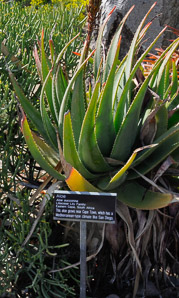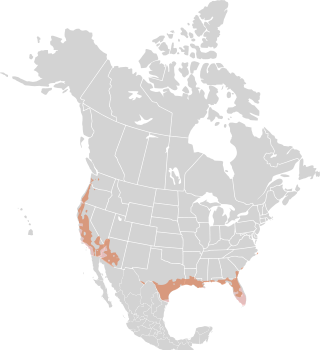
|
Aloe succotrina Lam. Aloe, fynbos aloe
This aloe is found in mountainous areas of South Africa: in parts of Cape Town and the southwestern corner of Western Cape, South Africa. It is not found in the wild in North America. It has the distinction of being the first aloe introduced to Europe, where it arrived in 1689. Identification: Plants reach 3-5′ (1-1.5 m) in height. Like other aloes, their leaves form rosettes. Leaves are ascending, curved, shaped like the keel of a boat in cross section, tapering to a point, with sharp white bumps along the edges. They are about 1½′ (50 cm) × 4″ (10 cm) in size. Flowers appear in a tall raceme up to 1′ (35 cm) high. Each flower is tubular in shape, nodding, up to 1½″ (4 cm) long, and red to orange in color. They appear in the winter. Online References:
The South African National Biodiversity Institute's web site, plantzafrica.com
Aloe succotrina description by Thomas H. Kent, last updated 25 May 2020. © FloraFinder.org. All rights reserved. |
2/24/2010 · San Diego (Quail) Botanic Garden, Encinitas, California Range: Zones 9b-10:
|



